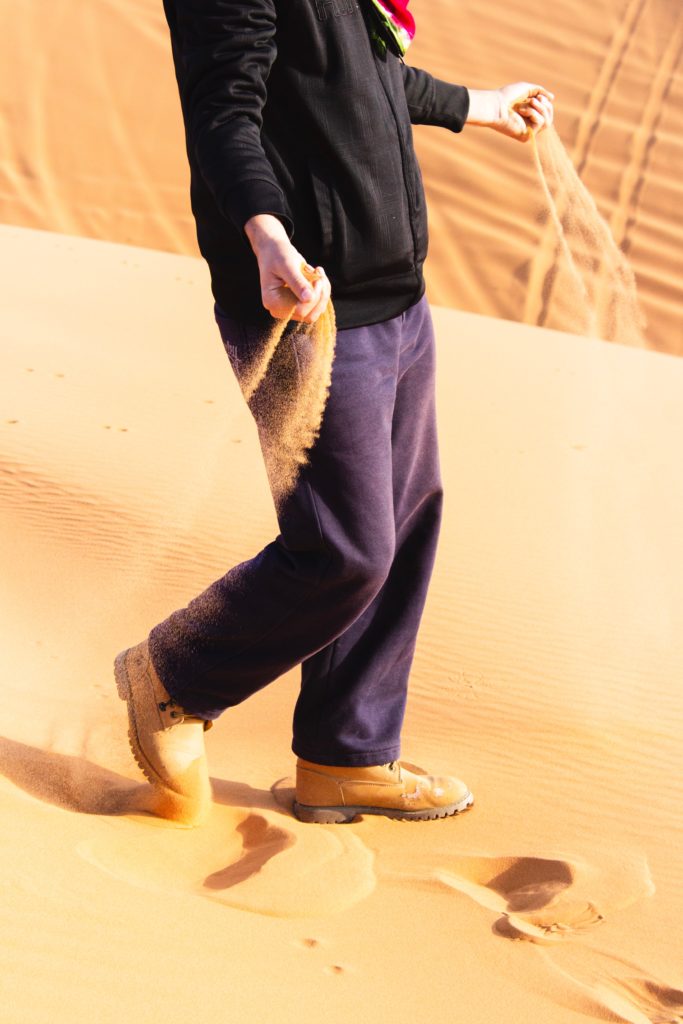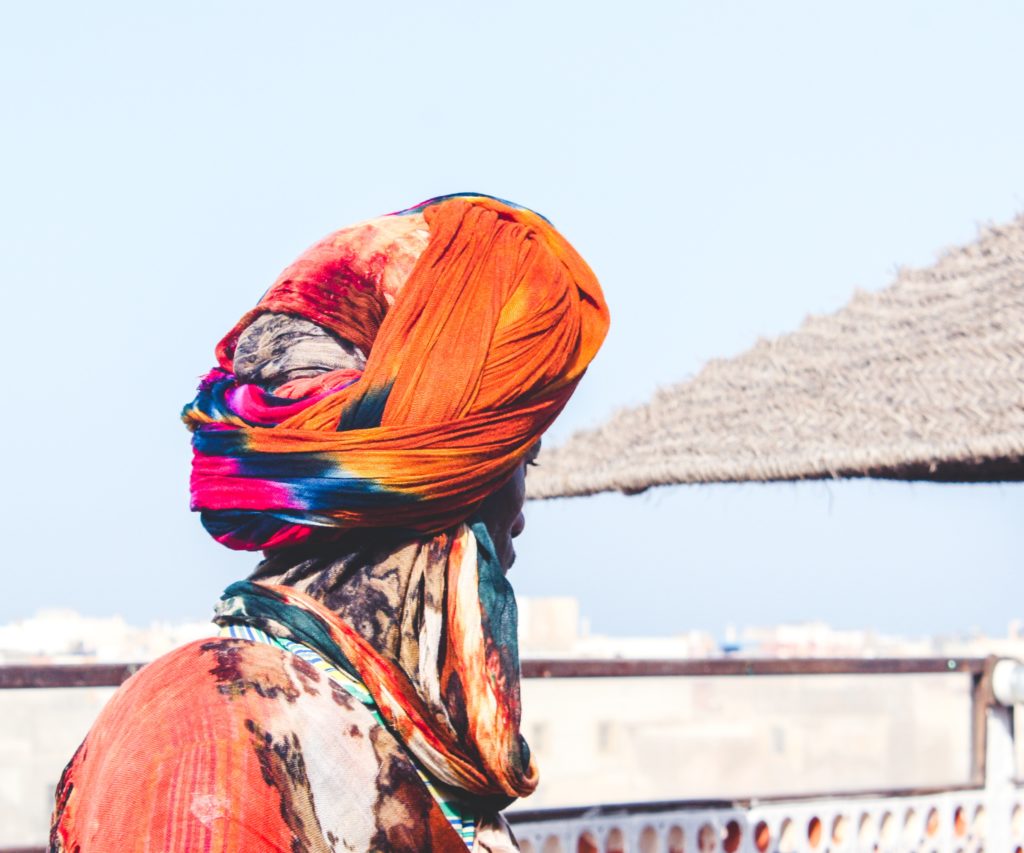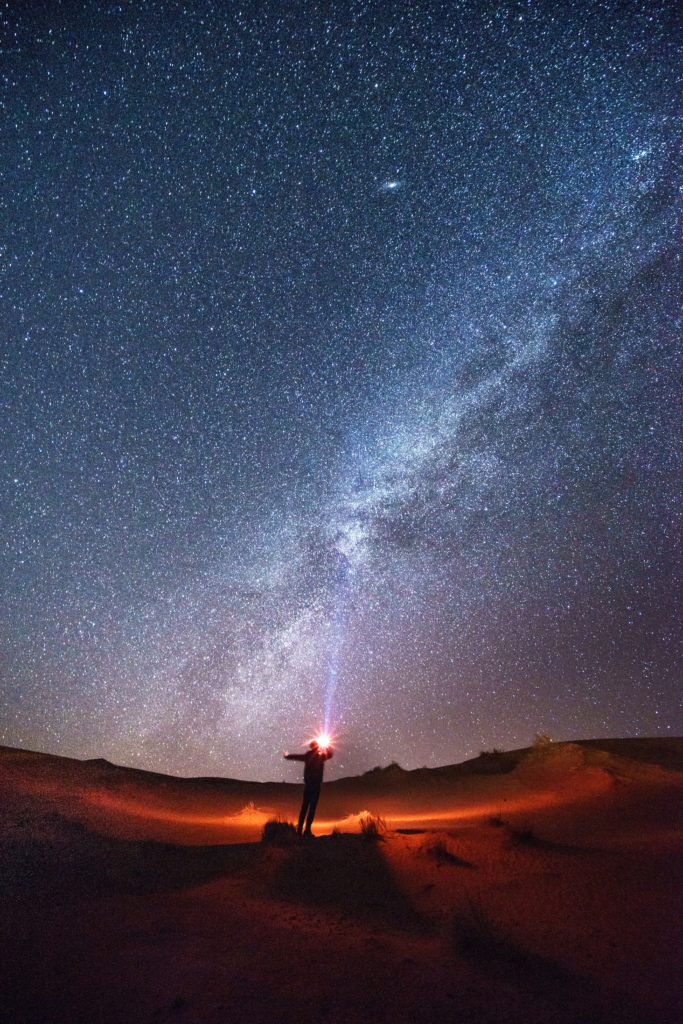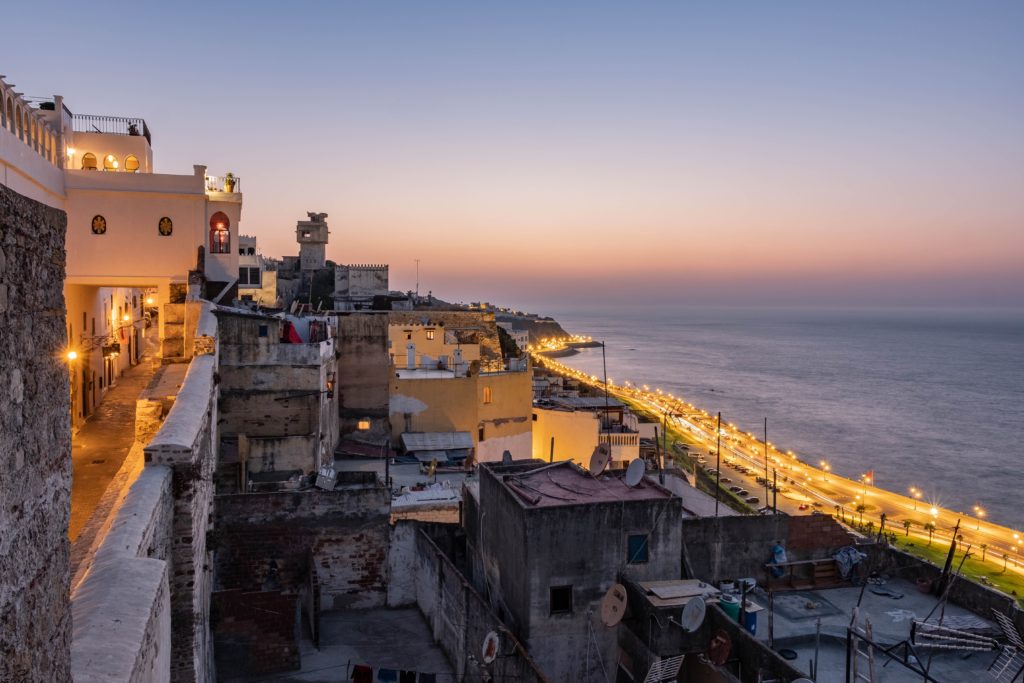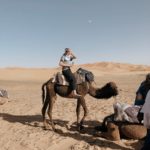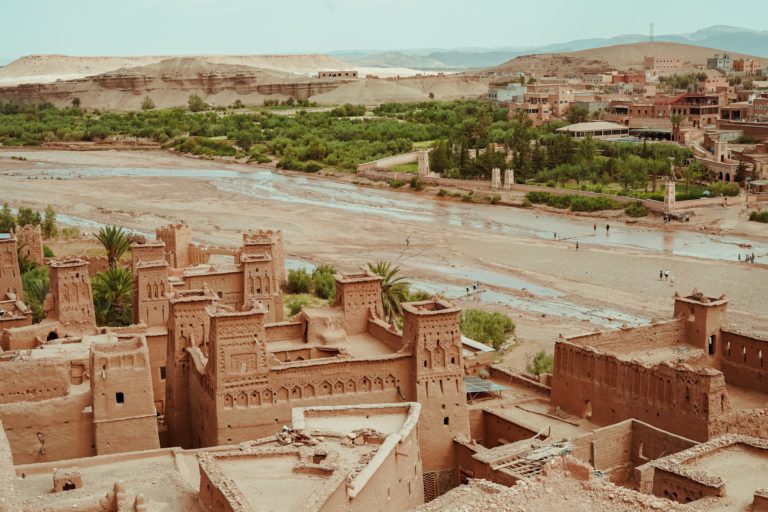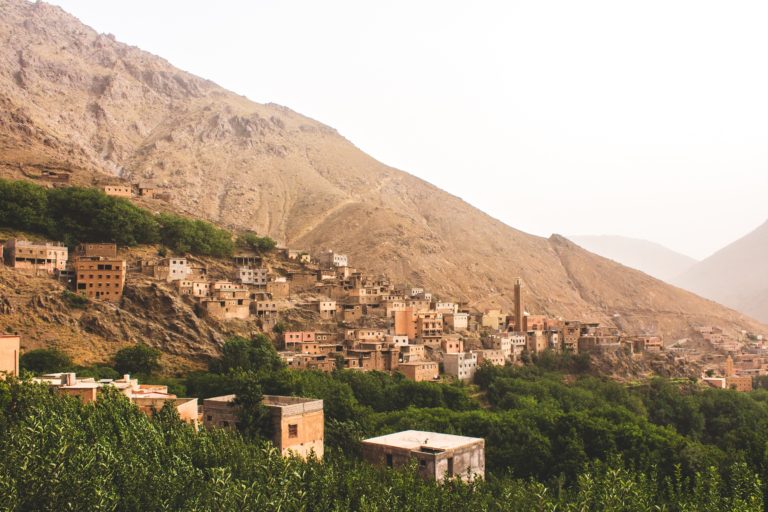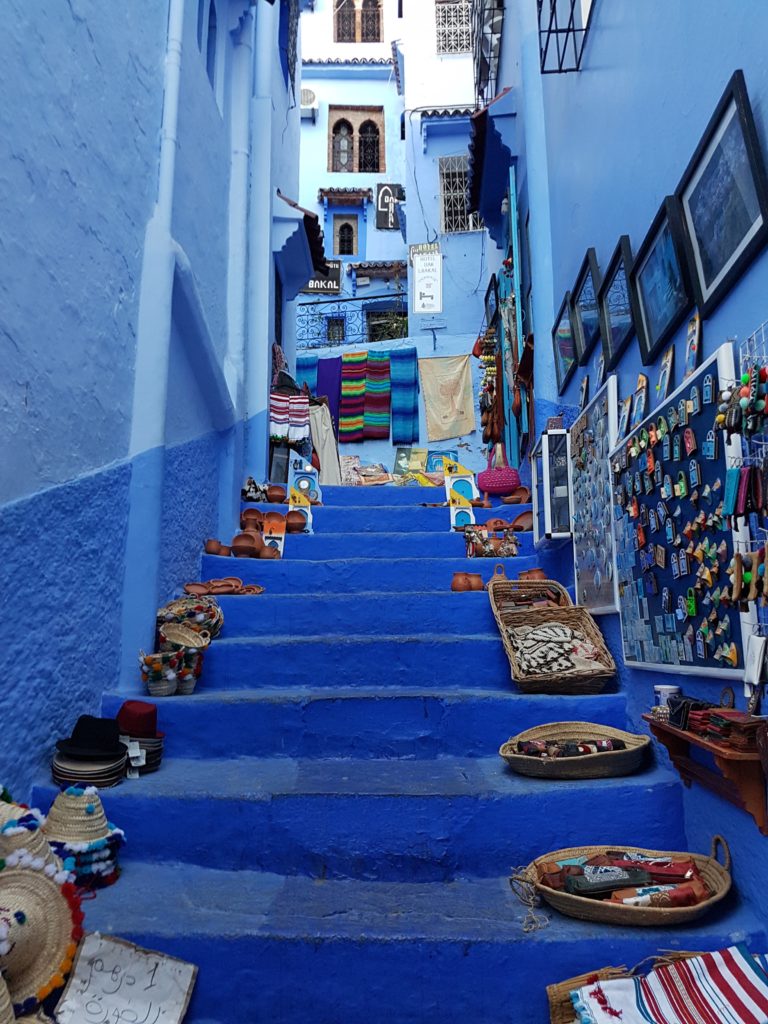Main Info
Day 1: CASABLANCA
Pick up at the airport/riad or convenient location for you and start a guided tour of the city. Casablanca is situated on the shores of the Atlantic, is the largest city and most important port of the country, is considered the major economic and commercial centre in the country with an important heritage that includes places such as the Mosque of Hassan II, the Park of the Arab League, the former Cathedral of the Sacred Heart, the Museum of the Villa des Arts, the Mohammed V square, with facades of Andalucian inspiration, the old Medina and the Central Market.
The old Medina of Casablanca can only be visited on foot and is the real heart of the city, surrounded by its walls with bastions dating back to the sixteenth century; its network of small and extremely colourful narrow streets are the life of this medina. With all kinds of items for sale you can soak upthe typical daily atmosphere or observe the industriousness of its craftsmen whilst wandering through the winding alleyways in which the aromas of the spices abound.
Day 2: CASABLANCA – EL JADIDA – OUALIDIA – SAFI – ESSAOUIRA
This morning after a good breakfast we will head in the direction of El Jadida, port city of the Moroccan Atlantic coast, which was a Portuguese colony for two centuries. Its ancient fortification was named a World Heritage site by UNESCO and is a mixture of Moroccan and Portuguese, we can visit this small fortified city facing the sea, walk by its small and quiet citadel and its long beach, then continue toward Oualidia; a picturesque resort located on the shores of the Atlantic Ocean and surrounded by many lakes which provide its unique natural surroundings and is located in a small elevation from where you can still see some vestiges of the kasbah built in 1634. Its greatest attraction is its lagoon with a length of 12 km, bordered by sandy beaches and dunes, a landscape truly worthy of viewing.
We will continue towards the very industrial port city of Safi; one of the most important fishing ports of the coast, as any good coastal city, Safi also offers us great beaches and a rich tourism heritage as its medina is marked with a traditional character that is no longer visible in other cities. Arrival in Essaouira where we will make our first contact with this small fishing village.
Day 3: ESSAOUIRA – MARRAKECH
During the morning we will have time to discover this beautiful fishing village with a great personality located on a small rocky platform that is inland from the sea. Its beauty does not go unnoticed, it is a very quiet town known as the Pearl of the Atlantic, the Sleeping Beauty or the Windy City due to its great sandy beach and its trade winds which make the area into an ideal place for surfers. Its small tranquil medina with orderly streets and paths giveEssaouira its own personality, different from other medinas. The towns’ main businesses are fishing, handicrafts and tourism, so we cannot miss the colourful and lively spectacle of the boats returning to port with the gulls loitering between boats. A leisurely stroll to imbibe the charm of its narrow streets, white walls and its doors painted in blue and we can soak up a relaxed and quiet atmosphere in the Medina.
We then leave in the direction of Marrakech where we arrive in the middle of the afternoon so you will be able to enjoy its square in full action.
Day 4: MARRAKECH
Throughout the day we visit the great city of Marrakesh in the hands of a local guide to discover its fascinating history through the famous Koutoubia, Bahia Palace, the Saadian Tombs and the Menara Gardens. You can eat at a typical restaurant in the medina (to be paid for by the client) and the afternoon will be free to discover for yourselves the charms of this city, to walk through the streets of the medina, get lost in its immense market or savour traditional Moroccan food in the Djemma el-Fna Square. Visiting this city means being able to observe the essence of Morocco which is always in constant change. The former beauty of the city is still alive today, with the smell of fresh mint, the tastiest spices and the sound of the snake charmers and the hustle and bustle of its impressive souk, the largest in all of Morocco. Marrakech is all this and much more; the capital of the south and the epicenter of tourism and handicrafts. The main focal point of the city is the medina, the souk and its beautiful Djemaa-El Fna Square, tourists often lose themselves in the Medina, it is very common, but this, as opposed to medinas as big as the one in Fes, involves no risk. In its alleys, the traveller will find shops of the most varied products, as well as food stalls where the traditional snail soup is served and if you are attracted by the intense smell of the mint, you will reach a stall full of fascinating herbs. The alleyways of the Medina all lead to the Djemma el-Fna Square. This is a very busy square, sometimes overwhelming to those who are visiting for the first time. But it is a magical place and without doubt, it is difficult to stop only for a short time. In the morning the square is full of stalls selling juice and dried fruit then in the evening jugglers, magicians, snake charmers and storytellers take over. This square has recently been declared a World Heritage site by UNESCO. Accommodation in Marrakech.
Day 5: MARRAKECH – TIZI N’ TICHKA – TELOUET – AIT BENHADDOU
Today after breakfast our path will continue towards Ait Benhaddou. We cross the High Atlas mountains where we shall enjoy the extraordinary landscapes, the colours that change from oranges to greens, the sides of the roads occupied by vendors and scenery truly worthy of seeing. We will cross the mountain pass Tizi n’Tichka, at 2260 meters of altitude, the highest point of the route, seeing kasbahs and sets of genuine adobe houses as we go by. We arrive at a small mountain village called Telouet where we will make a stop to visit its beautiful kasbah. Although looking from the outside there is a lot of deterioration, when we enter we have a pleasant surprise and find endless chambers made for the military and white ornamented walls of gypsum, but the biggest surprise of this kasbah is at the end of your visit where a very nicely decorated door appears and opens onto the visiting room of what was formerly the palace and various rooms that in their time were the rooms of women who lived there. Finally we arrive at a beautiful window that leads directly to the village from where apart from having a magnificent view of Telouet and the Atlas, you will be able to take some great photos.
We continue to Ait Benhaddou, originally inhabited by the tribe of Ben Haddou but declared a UNESCO World Heritage site when this fortified kasbah began to deteriorate. Ait Benhaddou is a majestic fortification of sand colour, its interior looks like the set of a movie and it is impressive to stroll around. Its citadel is tiny and consists of a few pebbled and narrow winding streets that climb up until you reach the top of the fortification, where there are some splendid views with the red tones of the dry mountains.
Day 6: AIT BENHADDOU – OUAZARZATE – SKOURA – KELAAT M’GOUNA – BOUMALNE DADES
Today our route will take us to Ouarzazate, the intermediate point that joins the mountains and the desert. We pass through the valley of Skoura with more than 700,000 date palms which stands out as an important enclave of greenery with kasbahs scattered throughout the oasis and its surroundings.Our route continues towards the Valley of Roses, situated at the foot of the High Atlas, as its name indicates it has an important crop and very interesting from the point of view of tourism, 30 km of uninterrupted rose cultivation, a scene of splendid greenery nestled at the foot of a canyon of ochre hues that offers a landscape of beauty and that forms part of the most important spectacles in Morocco. We will arrive at the Dades Gorge and stay overnight.
Day 7: DADES GORGE – BOUMALNE – TINGHIR – TODRA GORGE – TINJDAD – ERFOUD -MERZOUGA
We depart for Merzouga this morning, passing through the valley of Tinghir, located at 1300 metres of altitude, we will arrive at Todra Gorge with time to visit and contemplate the great canyon, with its limestone rock red vertical walls and where the last 600 metres are the most spectacular as the canyon is narrow and changes to have a width of about 10 metres and 160 metres in height. Its picturesque environment makes it an obligatory stop, a whole paradise of stone with a river of crystalline waters, dotted by kasbahs and full of palm trees, this one of the most beautiful landscapes of Morocco. Ourpath continues through Tinjdad and then Erfoud where we will have the possibility of visiting the factory of fossilized marble and the museum of the fossils and minerals which hosts a collection of extraordinary fossils. Our trip then heads in the direction of Rissani, arriving finally at the foot of the spectacular dunes of Erg Chebbi, where we take a welcome tea while resting and we preparing for the camels that will take us to the foot of the large dune. During the course of an hour and a half we can go on taking photographs, an experience that without a doubt will astound you. At night you can see that the desert takes on different colours and can even get quite cold depending on the time of year you go. We are served dinner to the playing of drums and singing, and the big fireplace will keep us company until it is time to go to sleep. So it is best to enjoy without any worries this authentic, magical night under the starry sky of the desert.
Day 8: MERZOUGA – TOUR OF DUNES OF ERG CHEBBI
Doubtlessly one of the greatest spectacles in the desert is to see the dawn, so today we rise early to contemplate the wonderful sight, you should not miss seeing the changes of colours that the dunes take on as the sun rises over the horizon. A visual spectacle that you are not going to forget. The camels await to return us to the riad for a good shower and a traditional Moroccan breakfast and we continue making our journey through the heart of the desert to enjoy the magic that the dunes, its landscape and especially the life of nomads in the desert offer us, a simple life that we are sure that everything relating to the nomads will astound you.
We pass by Dayet Sriji; Lake of the Flamingos, (depending on the winter there tends to be more or less water and many birds hibernate there, mainly the flamingos), then we come to Khamlia, known as the ‘Village of the Blacks’ where we stop. With a population of 334 inhabitants of Gnaoua and Berber ethnicity originating in Black Africa, they moved to the Sahara where they began to settle along with nomadic Berbers, its people are warm, friendly and quiet, and due to its culture, music is important to them. Khamlia invites us to enjoy their hospitality, to take a cup of tea and to listen to music resting in the wonderful landscape of the desert between dunes. Our route continues between the dunes (where the Paris-Dakar passes), and we can get to know some of the semi nomadic families living in the area. In this sea of sand and stone we will have an adventure that you will be able to enjoy every second!! We will then come back to the hotel where we will overnight at the Lodge.
Day 9: MERZOUGA – RISSANI – ERFOUD – ERRACHADIA – THE ZIZ GORGE – MIDELT
Our way continues towards Midelt, first going by Rissani very famous for its market, this city exhibits itself with dignity and it prides itself on being the last commercial stops before the desert, the atmosphere that is breathed in while walking through the souks of Rissani is unique at twilight due to the roofs that filter the rays of the sun in an explosion of colours and the smell of the combination of spices is as outstanding as it is well known.
Our next destination will be Erfoud. One of the charms of this town is its tranquility and we will also have the possibility if we feel like it to visit the factory of fossils. Next we pass by the Ziz valley, an immense valley in all its splendour, a natural space surrounded by canyons with their peculiar reddish sand and the impressive palm grove that stretches for miles and miles, an immense natural space bordering the valley. We stop at the dam of Hassan Adakhil which we can see clearly in its full length, this dam offers beautiful panoramic views of the contrast of its turquoise blue waters with the ochre coloured mountains surrounding it, then we continue to the Middle Atlas through the high pass of Tizi n’Talghom where you can expect landscapes and inhospitable lands full of life and stories. The trip allow us to observe the landscape, take photos and stop in all the places that are worth a visit, before we will arrive in Midelt where we will spend the night.
Day 10: MIDELT – AZROU – IFRANE – FES
Today after a hearty Moroccan breakfast we depart towards Fes, passing through Azrou; an important Berber population located in the interior of the Media Atlas and surrounded by hills, the main interest of this small town is its surrounding cedar forest and where you can see the famous Big Gouraud Cedar the largest millennial of the region, another interesting point to see are its hundreds of Barbary monkeys who live in the area and that they are curious and love to play with the people.
We will continue toward Ifrane; located in the mountains of the Middle Atlas, this is an oasis of coolness and vegetation, with its lakes and fountains of alpine characteristics known throughout the world as the “Moroccan Switzerland “, above all for the European style houses with sloping roofs which arenothing to do with the traditional architecture of Morocco. Due to its altitude (1630 metres) Ifrane is surrounded by trees and what is most striking is the nature that surrounds this small city, we will also be able to make a visit to the university, well known for being one of the most important in the country.
Our route will continue toward Imouzzer Kandar a population located between Ifrane and Fes, with an altitude of 1300 metres and outside the normaltourist circuits, where we find a very welcoming and pleasant people. We can relax a bit here before arriving at Fes and we continue through the Middle Atlas enjoying the landscapes that surround us up to mid-afternoon and finally Fes.
Day 11: FES
Today we will spend the whole day visiting this great city, the oldest, richest, cultural, religious, spiritual and mysterious of the four imperial cities of Morocco, which you will notice has not suffered the passage of time.
The medina of Fes has to be absorbed without haste, it is the largest of the Maghreb, its labyrinthine alleys are the charm of this medina, but to appreciate this city it is best to walk by day and then in the evening it changes completely; during the day Fes is a bustling city full of people wandering in the shops, buying or just sightseeing, but when strolling after sunset you see that it acquires another pace and is much more relaxed and less overwhelming.
Its medina is a maze of narrow streets with houses, shops and workshops, comprising more than 150 neighbourhoods, and each of them has its mosque, its Koranic school and bakery etc… Fes has hidden among its adobe walls palaces, mansions, mosques and gardens that are like backwaters of peace for those who survive the bustle of its streets, for this reason while walking, observe well each gate, because if it is ajar it can offer the pleasant surprise that within, you will see a different world.
The most famous monuments are the Mosque of Moulay Idriss (constructed in the IX century, rebuilt in the XIII), the tomb of the founder of the city, the Quaraouiyine Mosque (founded in the year 859 and extended in the XIII century), the Medersa Bu’Inania, a residence for students of the Koran which was built in 1355 and the mosque of the Andalusians (founded in 860 and enlarged in 1200). First, before you dive in the bustle of the city, try to appreciate it as a whole, and from its multiple viewpoints. You can observe the fabric of the city, the walls of the houses, the twilight of its streets, the pasty colour of the houses, which have been anchored into its appearance since the city was founded. The only modern things that have to blend in with the atmosphere of past centuries are the TV antennas and the satellite dishes. Everything else, is pure vintage.
Day 12: FES – MEKNES – MOULAY IDRISS ZERHOUNE – VOLUBILIS – OUEZZANE – CHEFCHAOUEN
Today our route continues in the direction of Meknes to visit the ruins of Volubilis, we pass by the Rif Mountain Range, its winding and vertiginous roads make this a very interesting road where we can discover some unpublished scenery, and we are sure that the experience you live along this road will give you a lasting and unforgettable impression. We arrive in Volubilis, a location that houses the most stunning ruins and the most well preserved throughout Morocco, declared World Heritage site in 1997; an expert guide will be with us during this visit of an hour and a half. We will find that some areas arelimited to the public but we will be able to move freely through the complex. Many of the mosaics are in good condition, some of the most spectacular sights are the Capitol, the Basilica and the Forum that were built on the highest part of the city.
Our trip continues toward the Imperial city of Meknes where we stop for lunch, and its medina is very similar to Fes, coquettish and quaint, making it much easier for walking and staying oriented, is very traditional, winding alleys full of life and their market stalls of groceries, restaurants and craft cooperatives. However its small size does hide treasures of a sublime architectural beauty and its symbol, the Bab Mansour of 1732 is the largest gate in the whole of Africa.
We will continue over the Rif mountains where we visit the town of Ouezzane; with as authentic Moroccan people as we will are likely to see, theinhabitants are genuinely friendly, their craft skills are unprecedented, making hand-made furniture, fittings, clothing, shoes, etc. We will be able to stroll through the narrow streets of the medina filled with workshops and shops where one feels absorbed by an accumulation of sensations.
Finally today we will arrive in Chefchaouen.
Day 13: CHEFCHAOEN
Chaouen, Xauen, Chichauen; all names used to refer to a magical town located in the Rif Mountains. Hidden between the peaks of the cordillera with its clear and clean light, nestled between the slopes of two mountain peaks and surrounded by cultivated fields that further highlight the white of its houses, this magical town, where the local blue displays the full palette of shades, confusing the horizon with the sky, suddenly appears. Its unpredictable narrow streets are painted in indigo blue to repel mosquitos; they are an ideal place for strolling and admiring this wonderful town that is one of the quieter places in Morocco. The medina and the atmosphere of the Square of Uta remain the most amazing place that you really ought to see. Its medina isespecially attractive due to the colour of the houses, is formed by a maze of narrow streets many of them are cul-de-sacs and without a doubt is a safe place, quiet and wonderful to walk around where you will feel at home as the inhabitants are very hospitable people.
Day 14: CHEFCHAOEN – OUEZZANE – SOUK ARBAA GHARB – KENITRA – RABAT – CASABLANCA
This morning we will head towards Rabat passing through Kenitra; coastal city of Morocco, next to the mouth of the River Sebu. In this area there are many lagoons and marshes, it is apparently modern while still retaining the old medina whose centre is the Achouada Square, with a humble medina, being small and old makes this town an interesting place to visit, as we stroll through narrow streets we find living history etched on its scarred walls, reminding us that this place is truly worth visiting not in part thanks to its tranquility and simplicity. We will continue to Rabat; known as “The City of Gardens” Rabat is a perfect combination between ancient and modern city, one of the most dynamic cities and commercial centres of Morocco where you can see one of the most famous monuments in the country, “The Tower of Hassan” located at the top of one of the city’s hills. From the river there are extraordinary views and at night it is illuminated giving a truly beautiful touch.
The medina of Rabat is without a doubt, another of the places to get lost in, you can stroll with ease through its streets full of shops, where there is a mix of smells and products of all kinds, crafts, species, food, animals, carpets, etc. Eventually we will arrive in Casablanca to spend the night.
Day 15: CASABLANCA
After breakfast in the hotel, transfer to the airport depending on the departure time of your flight.
Tour Include :
Private Transport with A/C
Driver/guide english speaking
Fuel
Hotel (breakfast & dinner included)
Camel Ride & Night in Sahara Desert
Camel Per person
Sandboarding in The Dunes
Not included :
Flight
Lunchs
Drinks
Monuments tickets

